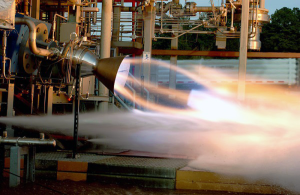After successfully testing a 3D printed rocket engine, Aerojet Rocketdyne has been awarded a contract from Wright-Patterson Air Force Base to develop and demonstrate large-scale 3D printing. The contract, secured through the Defense Production Act Title III Office, will see the manufacturer of rocket and missile propulsion systems use multiple large selective laser melting machines for liquid rocket engine applications for national security space launch services. The GenCorp company will redesign large, traditionally manufactured components to be fit for 3D printing.

Program manager of Additive Manufacturing at Aerojet Rocketdyne, Jeff Haynes, said of the company’s history and future with 3D printing, “Our liquid rocket engines have been used for half a century and our products are highly efficient and complex with a safety and reliability record that is unparalleled. Incremental manufacturing advances have been applied over the history of these programs with great success. Additive manufacturing shifts these advances into high gear and ultimately transforms how these engines are produced.”
With the new federal contract, Aerojet Rocketdyne plan to demonstrate the use of nickel, copper, and aluminum alloys all with the larger additive manufacturing machines to produce parts as simple as large ducts to more elaborate heat exchangers, all 3D printed in full scale. By combining multiple complex components into single parts with 3D printing, with the company’s press release stating the possibility that doing so may ultimately “replace the need for castings, forgings, plating, machining, brazing and welding.”


